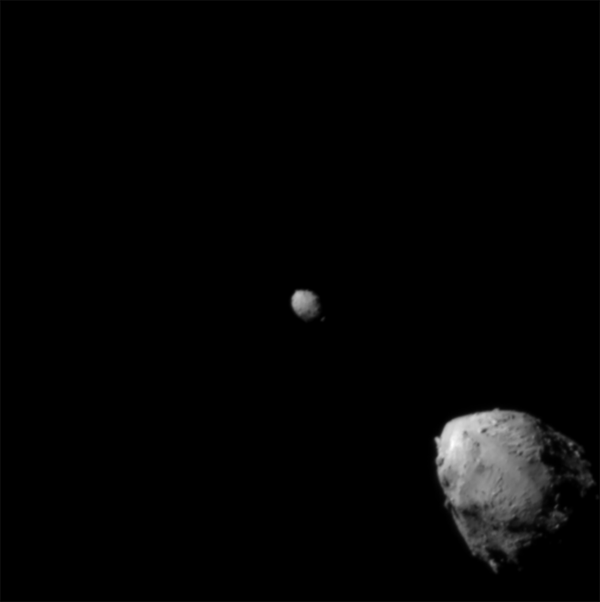In late September, a 1,260-pound (570 kilograms) spacecraft traveling 14,000 mph (22,530 km/h) smacked directly into a small asteroid named Dimorphos, throwing up a massive cloud of dusty debris.
The hit was intentional, the culmination of NASA’s Double Asteroid Redirection Test (DART) designed to determine whether a “kinetic impact” — i.e., hitting an asteroid with a spacecraft — could change its trajectory. The target, Dimorphos, is the 525-foot-wide (160 meters) moonlet orbiting a larger asteroid, 65803 Didymos, which is 0.5 mile (780 m) across. DART’s goal was to adjust the orbit of Dimorphos around Didymos, aiming to alter its nearly 12-hour period by at least 73 seconds.
It succeeded. After following the pair for two weeks, NASA announced yesterday that Dimorphos’ 11-hour and 55-minute orbit has since shrunk to 11 hours and 23 minutes, a difference of 32 minutes. That’s roughly 26 times the mission’s 73-second baseline for success.
First steps
It’s a watershed moment in the field of planetary defense, which aims to understand and ideally mitigate the risks posed to Earth from asteroids and comets that may cross our planet’s path. “As new data come in each day, astronomers will be able to better assess whether, and how, a mission like DART could be used in the future to help protect Earth from a collision with an asteroid if we ever discover one headed our way,” said NASA planetary science division director Lori Glaze in a press release.
The mission can now be crowned a success. But despite the fact that the DART spacecraft has been smashed to smithereens, researchers’ work is far from complete. In particular, scientists are eager to study the huge cloud of dust and debris thrown out by the impact, which stretches at least 6,000 miles (10,000 km) long and has persisted for weeks. Images from several observatories, including the CFHT and SOAR telescopes, show Dimorphos sporting a stunning cometlike tail. At last week’s Division for Planetary Sciences conference in London, Ontario, several researchers commented on the surprising and intriguing nature of this lingering debris, whose long-term presence was somewhat unexpected.
Researchers will also continue to watch the asteroids’ motion and rotation through March 2023, when celestial geometry will render the pair unobservable from Earth for a time. They also hope additional observations will help pin down Dimorphos’ surface properties and mass, which isn’t accurately known. And a future European Space Agency mission, Hera, will visit the pair after launching in late 2024.
Ultimately, the more we can learn about DART’s impact (pun intended) on the pair, the better prepared we can be to launch another, larger mission to redirect an actual threat to Earth in the future, should one arise. So far, though, DART has clearly taught us that it might be difficult to move mountains, but we can certainly move asteroids.










